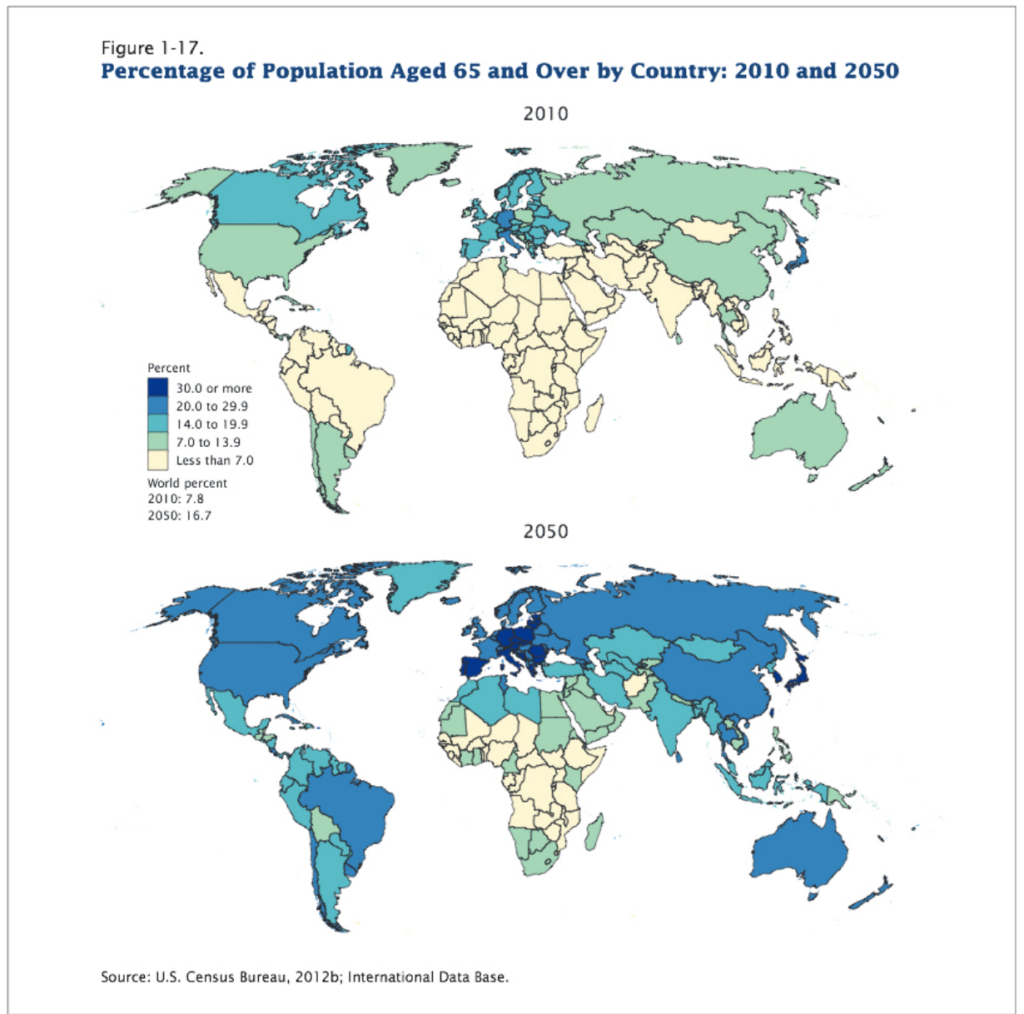I’m often asked if senior care, specifically in-home senior care, is really the fast-growing employment opportunity that we always say it is. Consider this:
- The percentage of the U.S. population in 2010 aged 65 and over was 40.3 million. In 2050, is it projected that nearly 21% of the entire population of this country will be over 65 (up from 4.1% in 1900.)
- Over 38% of those aged 65 and over had one or more disabilities in 2010, with the most common difficulties being walking, climbing stairs, and doing errands alone.
- Medicaid funds for long-term care have been shifting away from nursing homes. Funding for home- and community-based services increased from 13% of total funding in 1990 to 43% in 2007.
- The top ten states with people aged 65 and older in 2010 were also the top ten states with the oldest old, aged 85 and over. The top four states were California, Florida, New York and Texas.
These are just some of the highlights from the U.S. Census Bureau report, 65+ in the United States: 2010, released in June 2014. Prompted by the Baby Boom generation, those born in the years following World War II (from 1946 to 1964), the report examines the social and economic implications of an aging majority population.
The U.S. is not the only country to experience the Baby Boom. Western countries that experienced relatively low birth-rates in the thirties and subsequent high birth-rates in the 25 years after WWII include the Scandinavian countries, Germany, Austria, Belgium, France, Luxembourg, the U.K. and Switzerland. In fact, in 2010, 50 countries had a higher proportion of people aged 65 and over than the United States. According to the report, by 2050, that number is projected to reach 98, or almost half the countries in the world. And, of course, developed countries will experience a greater number of the oldest old (age 85+) because undeveloped countries have a lower life-expectancy.
Eldercare policies in not just the United States but around the world will have to accommodate this worldwide growing segment of the population.
This is the perfect time to become a professional senior caregiver. An expert in this field will have worldwide opportunities in the coming years. How does one start? At Caregiverlist®, we provide you with everything you need to become a professional senior caregiver. First, see if you have the temperament for senior care and you are aware of what the job entails.
Check your state’s minimum training requirements—Caregiverlist’s® basic training meets most state requirements. If you pass a criminal background check, you can begin the application process by using our free resume writer and attach it to our 5-minute caregiver job application.
Once you become a senior care professional, your opportunities for mobility are only as limited as your imagination. Whether you decide to work in the fastest-aging South and West regions of the United States or in aging-friendly countries like Sweden, Norway, or Germany, the universal truth is there will be no lack of senior clients in the near future.








